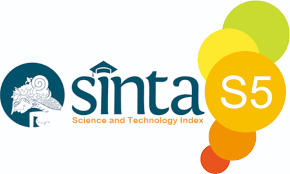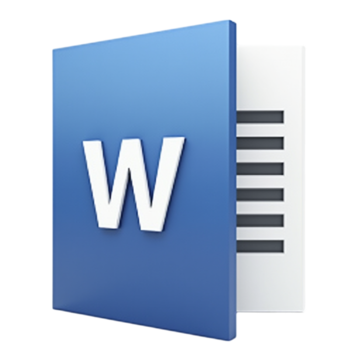Hattie's Visible Learning Evaluation Model in Learning Strategies and Publication of Scientific Work of IKIP Siliwangi Students
DOI:
https://doi.org/10.22460/jler.v7i1.21692Keywords:
Evaluation, Hattie's Visible Learning Model, Publication of Scientific PapersAbstract
This research aims to evaluate the application of the Hattie's Visible Learning Evaluation Model in strategy learning and the publication of scientific work sat IKIP Siliwangi. Using quantitative and qualitative data analysis methods, this research analyze student responses to sixty aspects of assessment that cover various learning elements. The results of the research identified the aspects with the highest and lowest scores from each study program, namely Guidance and Counselling (BK) and Indonesian Language and Literature Education (PBSI). These results provide in-depth insight regarding significant factors in developing effective learning strategies and supporting the publication of student scientific work such as humor, teaching strategies teacher, credibility outdoor/adventure programmes, lecturer effect, lecturer subject matter knowledge, questioning, religious campus, feedback personality, mentoring computer-assisted instruction, lecturer-students relationships, drama/art programs, study skills, extra-curricular programs, dan classroom discussion. Meanwhile, less effective factors are of concern, such as parental involvement, students control over learning, boredom, gender, use of calculators, changing school calendar, lack of sleep, moving between schools, mathematics, drugs, pre-term birth weight, ability grouping, not labeling students, ability grouping for gifted students. The implications of this research finding can be the basis for improving more optimal learning strategies in higher education environments, especially IKIP Siliwangi.
References
Badr, B. A. A., & Ibrahim, D. S. N. (2022). The Effect of a Proposed Program Based on the Implications of John Hattie’s Visible Learning on College Students’ English Oral Fluency. ة, 46(1), 13–55. https://doi.org/10.21608/jfees.2022.240151
Budiantoro, R. A., Kiswanto, K., Rizkyana, F. W., & Jannah, R. (2023). Kelompok Riset (Keris): Strategi Peningkatan Publikasi Ilmiah Bagi Dosen di Jurusan Akuntansi Fe Unnes. As-Sidanah : Jurnal Pengabdian Masyarakat, 5(1), 32–58. https://doi.org/10.35316/assidanah.v5i1.32-58
Damopolii, M., Ainiyah, N., Sultan, I., Gorontalo, A., & Gorontalo, U. M. (2022). Implementation of PAI in the Integrative-Implementation curriculum concept to strengthen the dimensions of the Pancasila student profile. Al-Ulum, 22(2), 489–506.
Devi, M. Y., Hidayanthi, R., & Fitria, Y. (2022). Model-Model Evaluasi Pendidikan dan Model Sepuluh Langkah dalam Penilaian. Jurnal Basicedu, 6(1), 675–683. https://doi.org/10.31004/basicedu.v6i1.1934.
Eacott, S. (2017). School Leadership and the Cult of the Guru: the neo-Taylorism of Hattie. School Leadership and Management, 37(4), 413–426. https://doi.org/10.1080/13632434.2017.1327428.
Hattie., J. & Ziere., K. (2019). Visible Learning Insights. London and New York. Routledge.
Hattie, J. (2008). Visible Learning. Visible Learning. https://doi.org/10.4324/9780203887332
Hattie, J., & Timperley, H. (2007). The Power of Feedback. Review of Educational Research, 77(1), 81–112. https://doi.org/10.3102/003465430298487.
Hubbi, U., Ramdani, A., & Setiadi, D. (2020). Integrasi Pendidikan Karakter kedalam Pembelajaran Pendidikan Agama Islam dan Pendidikan Kewarganegaraan di Era Milenial. JISIP (Jurnal Ilmu Sosial dan Pendidikan), 4(3). https://doi.org/10.58258/jisip.v4i3.1201.
Khulzannah, M. (2018). Strategi Peningkatan Publikasi Ilmiah di Universitas Gadjah Mada. Jurnal Ilmu Perpustakaan Dan Informasi, 3(2), 238–248. http://jurnal.uinsu.ac.id/index.php/jipi/article/view/3239.
Kim, H. J., Yi, P., & Ko, B. W. (2022). Deepening Students’ Experiences with Problem Identification and Definition in an Empathetic Approach: Lessons from a University Design-Thinking Program. Journal of Applied Research in Higher Education, 15(3), 852–865. https://doi.org/10.1108/JARHE-03-2022-0083.
Lipsch-Wijnen, I., & Dirkx, K. (2022). A Case Sstudy of the Use of The Hattie and Timperley Feedback Model on Written Feedback in Thesis Eexamination in Higher Eeducation. Cogent Education, 9(1). https://doi.org/10.1080/2331186X.2022.2082089
Martin, A. J., & Evans, P. (2021). Load Reduction Instruction Policy. In Building Better Schools with Evidence-based Policy: Adaptable Policy for Teachers and School Leaders. https://doi.org/10.4324/9781003025955-4.
Moulds, S. (2021). Visible Learning at Law School: an Australian Approach to Improving Teacher Impact in Intensive and Online Courses. Law Teacher, 55(2), 169–185. https://doi.org/10.1080/03069400.2020.1733358.
Nielsen, K., & KlitmØller, J. (2021). Blind Spots in Visible Learning: A Ccritique of John Hattie as an Eeducational Theorist. Nordic Psychology, 73(3), 268–283. https://doi.org/10.1080/19012276.2021.1962731.
Pangarso, Z. D., & Istiyono, E. (2022). Go Formative for Formative Assessment Feedback on the 10th Graders’ Material Comprehension and Learning Motivation. Jurnal Ilmiah Pendidikan Fisika Al-Biruni, 11(2), 243–253. https://doi.org/10.24042/jipfalbiruni.v11i2.13754
Ramakrishna, A., & Lalitha, J. (2023). An Analysis of “Visible Learning” and “Needs of Preservice Teachers” of University College of Education, Osmania University, Hyderabad. Open Journal of Social Sciences, 11(06), 311–328. https://doi.org/10.4236/jss.2023.116020.
Rømer, T. A. (2019). A critique of John Hattie’s Theory of Visible Learning. Educational Philosophy and Theory, 51(6), 587–598. https://doi.org/10.1080/00131857.2018.1488216.
Sabela, S., & Roesdiana, L. (2022). Meta Analisis Penerapan Model Pembelajaran. Jpmi : Jurnal Pembelajaran Matematika Inovatif, 5(5), 1269–1280. https://doi.org/10.22460/jpmi.v5i5.1269-1280.
Shodiq, F. S. (2023). Development of Nationalism-Religious Character through the Project to Strengthen Pancasila Student Profiles. Jurnal Kajian Agama, Sosial Dan Budaya, 8, Number(22), 1–14.
Supriyadi. (2013). Evaluasi Pembelajaran Bahasa Indonesia. In UNG Press Gorontalo. https://scholar.google.co.id/scholar?cluster=5059232428618740961&hl=id&as_sdt=2005&sciodt=0,5.
Tarbiyah, S. (2021). Persepsi Generasi Milenial Terhadap Model Pendidikan Islam Berbasis Keterampilan Abad 21. Shatut Tarbiyah, 27(November), 160–184.
Terhart, E. (2011). Has John Hattie Really Found the Holy Grail of Research on Teaching? An Extended Review of Visible Learning. Journal of Curriculum Studies, 43(3), 425–438. https://doi.org/10.1080/00220272.2011.576774.
Tong, H. C. C., Sidhu, G. K., & Wang, R. (2023). Perspectives of Visible Learning for Quality Learning Environment: A Case Study. Environment-Behaviour Proceedings Journal, 8(25), 79–85. https://doi.org/10.21834/e-bpj.v8i25.4839.
Vaughn, L. (2023). An Action Research Study on Visible Learning Feedback and Motivational Interviewing Concerning Underserved Advanced Placement Students. 362. https://www.researchgate.net/publication/372132270_An_Action_Research_Study_on_Visible_Learning_Feedback_and_Motivational_Interviewing_Concerning_Underserved_Advanced_Placement_Students.
Wiesenganger, M. (2019). Is it Possible and necessary to Cultivate Love? Education to Love According to “Summa Theologiae” of Thomas Aquinas. Kulturai Wychowanie, 2(16), 99–107. https://doi.org/10.25312/2083-2923.16/2019_08mw.
Yalçin, V. (2022). Design Thinking Model in Early Childhood Education. 9(134), 196–210.
Downloads
Published
Issue
Section
License

This work is licensed under a Creative Commons Attribution-ShareAlike 4.0 International License.







